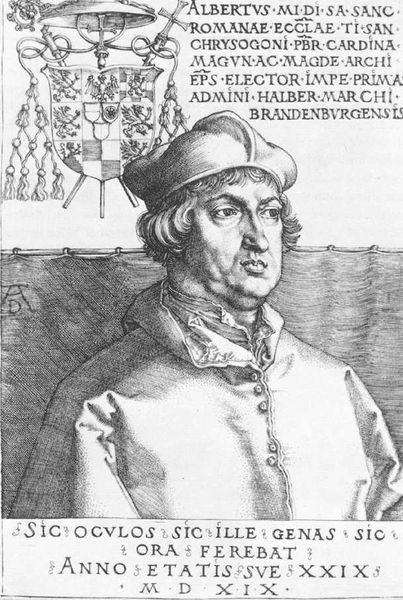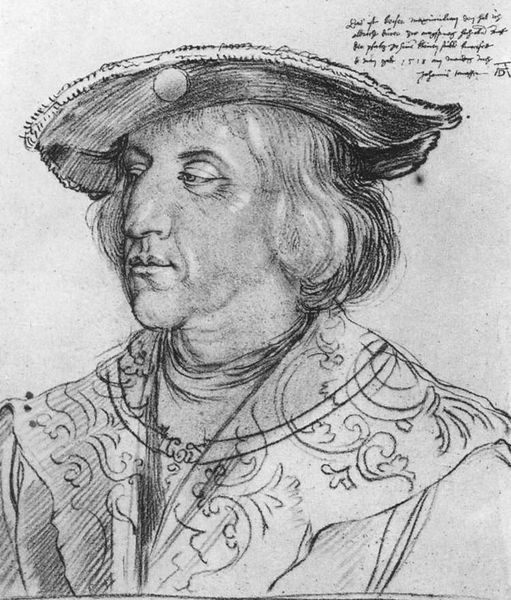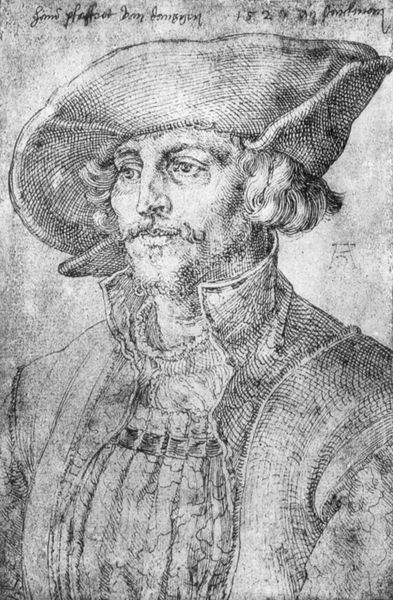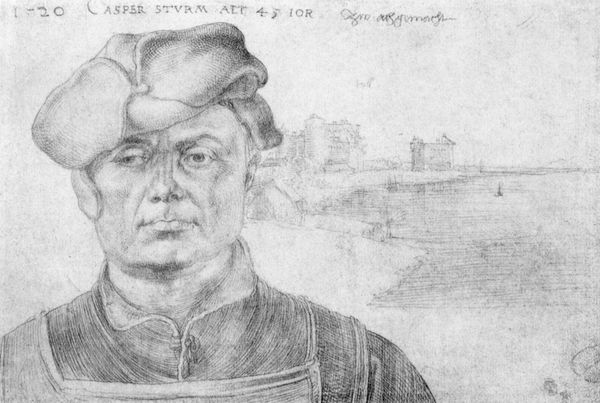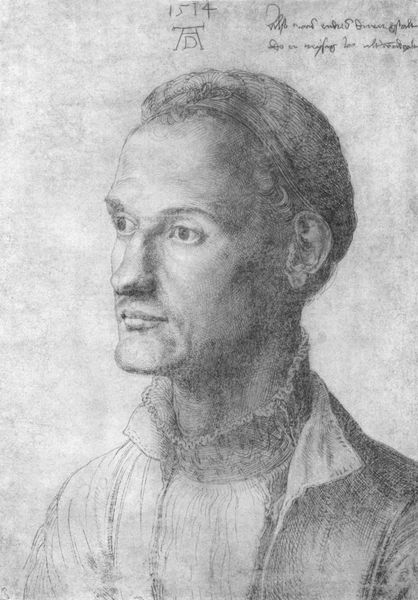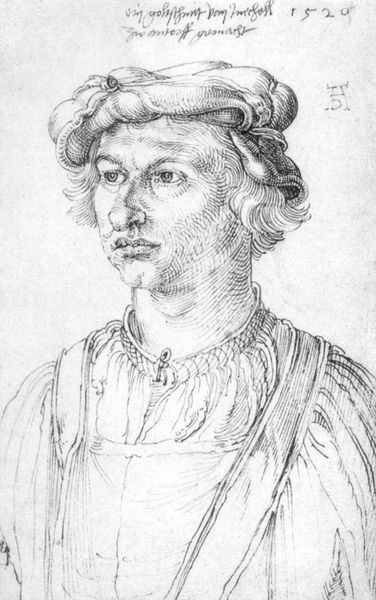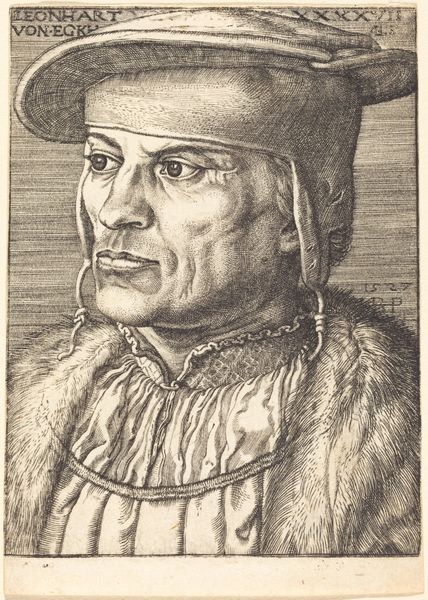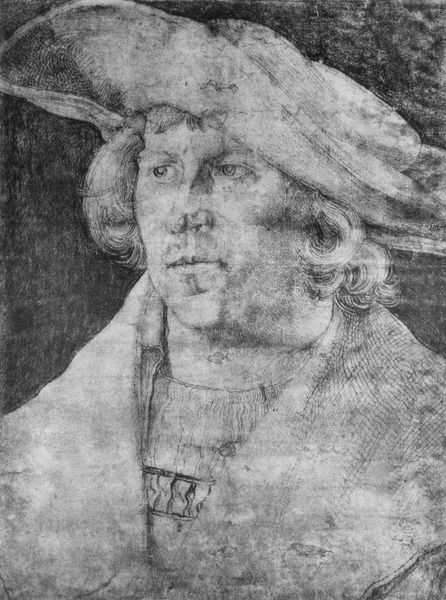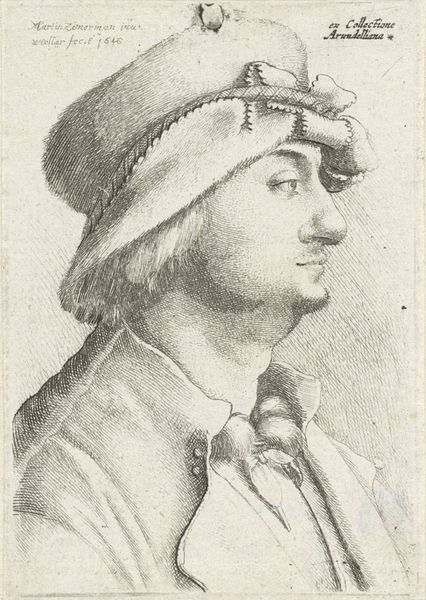
Portrait of Lazarus Ravensburger and the turrets of the court of Lier in Antwerp 1521
0:00
0:00
drawing, pencil
#
portrait
#
drawing
#
charcoal drawing
#
pencil drawing
#
sketch
#
pencil
#
history-painting
#
northern-renaissance
Copyright: Public domain
Curator: Looking at this, my first impression is how sharply defined the textures are for a sketch. Editor: Absolutely, it's incredibly detailed for a preliminary study. We're viewing Albrecht Durer's "Portrait of Lazarus Ravensburger and the turrets of the court of Lier in Antwerp," created in 1521. He rendered it with pencil, capturing the essence of the man and a sliver of his world. Curator: Yes, the fur trim alone – you can almost feel the texture! But look at his gaze, directed off to the side. It conveys such introspection, almost melancholy. It hints at something deeper. The inclusion of the turrets is curious, however, serving as almost heraldic devices placed on display for an unknown history. Editor: That gaze is compelling. Considering its time, portraiture was often an act of civic memorializing or propaganda. Lazarus Ravensburger would have likely been a person of stature in Antwerp, perhaps a merchant, given the city’s prominence in trade. It suggests a deliberate alignment of the individual with his urban identity and rising social mobility in Europe. Curator: So, this piece operates as both an individual and civic symbol? The detail certainly speaks to his status, and Durer was very aware of this emerging middle class, eager to consume art. Editor: Precisely. Durer's workshop produced engravings and woodcuts at a frenetic pace for the era to be dispersed quickly around Europe, particularly after the printing revolution that exploded during Durer's life. While Lazarus may have been rich, it’s also important to consider that art during that period increasingly reflects this drive toward broader representation. Curator: I agree. Durer really pioneered this new image economy in Northern Europe. But to shift a little… those turrets behind the figure – notice how simplified they are? It almost looks like two realities juxtaposed: a sharply realistic man alongside abstracted symbols. Editor: It highlights how artists balanced realistic representation with symbolic assertion. Lazarus’ identity isn't just himself, but bound to his civic life and role within it, emphasizing emerging mercantile strength during the northern renaissance. Curator: Ultimately, this piece allows us to ponder how Durer not only immortalized an individual but situated him within the rapidly changing social structures of the 16th century. Editor: Indeed, a fascinating reflection on the making of a public image, both of a man and his place within the grander narrative of an ascending city.
Comments
No comments
Be the first to comment and join the conversation on the ultimate creative platform.


